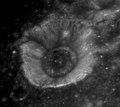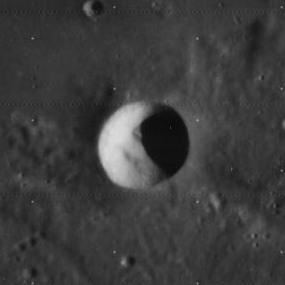
Bancroft is a small, bowl-shaped impact crater located to the southwest of Archimedes on the Mare Imbrium. A wide, shallow depression runs from the rim of Bancroft southeast to the Montes Archimedes. There are some clefts at the edge of the mare to the west and southwest of the crater. Other prominent craters are two small craters nearly to the west named Feuillée and Beer.

Aryabhata, named after Indian astronomer Aryabhata, is the remnant of a lunar impact crater located in the eastern Mare Tranquillitatis. The crater has been almost submerged by lava-flow, and now only an arc-shaped ridge formed from the eastern half of the rim remains above the lunar mare. This crater was previously identified as Maskelyne E before being named by the IAU in 1979. Maskelyne itself is to the southwest.

Egede is the remains of a lunar impact crater that has been flooded by lava, leaving only the somewhat polygonal circumference of the rim protruding just above the mare. It was named after Dano-Norwegian natural historian Hans Egede. It is located on the southern edge of the Mare Frigoris, to the west of the crater Aristoteles. To the southwest is an arc of low mountains curving between the rims of Aristoteles and Eudoxus. The floor of Egede is flat and nearly featureless, except for a few tiny craterlets, including secondaries from Aristoteles. The surviving rim has a maximum altitude of 0.4 km above the surface.

Apollonius is a lunar impact crater located near the eastern limb of the Moon. It lies in the region of uplands to the west of Mare Undarum and northeast of the Sinus Successus on the Mare Fecunditatis. It was named after Greek mathematician Apollonius of Perga. It is southwest of the crater Firmicus, and north of Condon.

Euler is a lunar impact crater located in the southern half of the Mare Imbrium, and is named after the Swiss mathematician, physician and astronomer Leonhard Euler. The most notable nearby feature is Mons Vinogradov to the west-southwest. There is a cluster of low ridges to the southwest, and this formation includes the small crater Natasha and the tiny Jehan. About 200 kilometers to the east-northeast is the comparably sized crater Lambert.

Ariadaeus is a small, bowl-shaped lunar impact crater on the western shores of Mare Tranquillitatis. It lies to the north of the crater Dionysius, and to the west-southwest of Arago. The crater is joined along the northeast rim by the slightly smaller Ariadaeus A, and the two form a double-crater. Its diameter is 10.4 km.

Appleton is a heavily eroded lunar impact crater that lies in the northern hemisphere on the far side of the Moon. To the northwest are the craters Von Neumann and Campbel. The smaller Golovin lies to the northeast, while further to the southwest is the Mare Moscoviense.

Atwood is a small earth moon impact crater that is located on the Mare Fecunditatis, to the northwest of the prominent crater Langrenus. It forms a triple-crater formation with Naonobu attached to the north rim and Bilharz near the west rim.

Blackett is a lunar impact crater that lies on the far side of the Moon, behind the southwest limb. It lies beyond the southeast outer ring of the immense Mare Orientale basin. The formation of that major feature has left Blackett deeply marked with ridge features trending from the northwest. Much of the crater has been shaped by the ejecta from Mare Orientale, particularly along the western half of the crater.
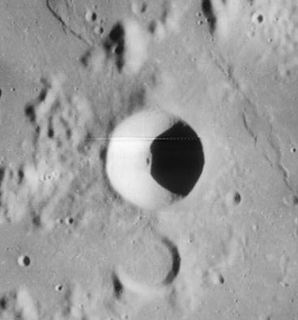
Darney is a small lunar impact crater that is located on the region of the Moon where the Mare Nubium joins the Oceanus Procellarum. It was named after French astronomer Maurice Darney. To the south is the lava-flooded crater Lubiniezky. The southern rim of Darney is attached to a series of low ridges that extend to the southwest.
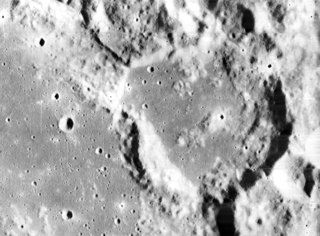
Condon is a lunar impact crater that lies on the eastern shore of the Sinus Successus, a bay along the northeast edge of Mare Fecunditatis. It was named after American physicist Edward U. Condon. It lies midway between the larger crater Apollonius to the north and the smaller Webb to the south on the Mare Fecunditatis. Condon was previously designated Webb R.
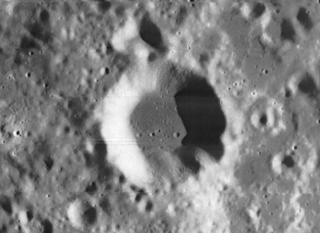
Townley is a small lunar impact crater that is located in the eastern part of the Moon. It was named after American astronomer Sidney Dean Townley. It lies to the northwest of Mare Spumans and southeast of the crater Apollonius. This crater was previously designated Apollonius G.

van Albada is a lunar impact crater that is attached to the south-southeastern rim of Auzout. It lies southeast of Mare Crisium, and north-northeast of the larger crater Firmicus. Directly to the east is Krogh.
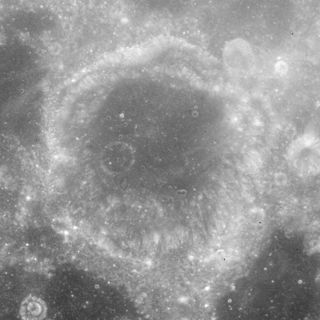
Dubyago is a lunar impact crater that lies in the eastern limb of the Moon. It was named after Russian astronomers Dmitry Dubyago and Alexander Dubyago. It appears significantly foreshortened when viewed from the Earth. It lies along the southern shore of the Mare Undarum, to the southeast of the crater Firmicus.

Crozier is a lunar impact crater that is located on the southwest edge of Mare Fecunditatis, a lunar mare in the eastern part of the Moon's near side. It lies to the east-northeast of the prominent crater Colombo, and southeast of the small crater Bellot.

Elger is a lunar impact crater that lies along the southern edge of Palus Epidemiarum, the Marsh of Epidemics, in the southwest part of the Moon's near side. To the northeast is the flooded crater Capuanus, and farther to the northwest is Ramsden.

Chrétien is a lunar impact crater that is located in the southern hemisphere on the far side of the Moon from the Earth. It lies due south of the Mare Ingenii, one of the few maria on the Moon's far side. The crater lies in the midpoint between the craters Garavito to the west-southwest and Oresme to the east-northeast, both of these being somewhat smaller than Chrétien.

Couder is a small lunar impact crater that is located just behind the western limb of the Moon, in a region of the surface that is brought into view during favorable librations. It lies on the inner foothills of the Montes Cordillera, a ring-shaped mountain range that surrounds the Mare Orientale impact basin.

Douglass is a lunar impact crater on the far side of the Moon. It lies to the southwest of the crater Frost and south-southwest of the large walled plain Landau.

Feoktistov is a small lunar impact crater on the far side of the Moon. It lies in the northern hemisphere, to the northwest of the Mare Moscoviense. This crater has a small outward extension along the northern side, giving it the appearance of two overlapping craters that have merged. There are slight indentations of the rim along the east and northwest sides. The rim is otherwise rounded and not significantly worn. Apart from an irregular strip in the northeast, the floor is relatively featureless.





